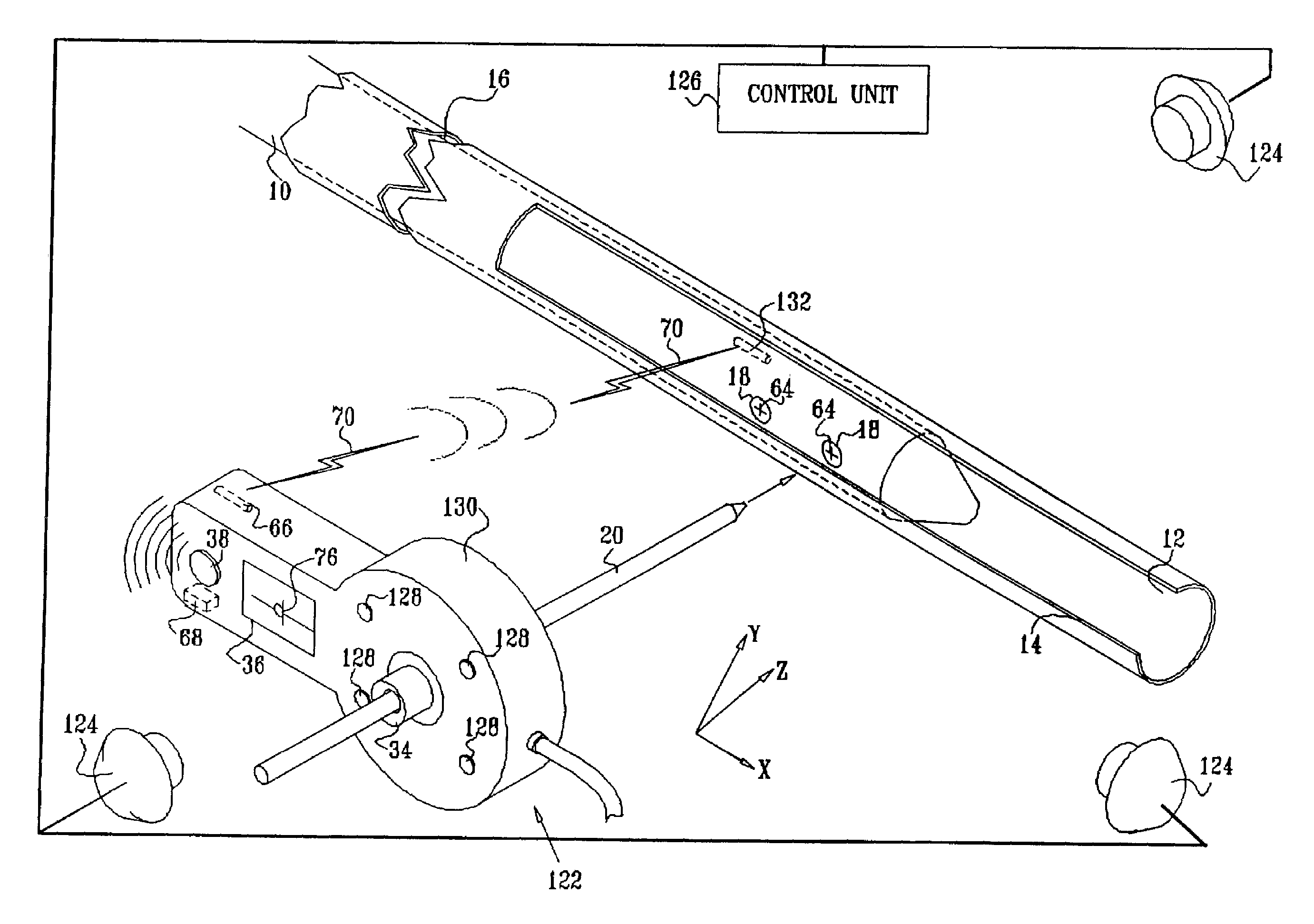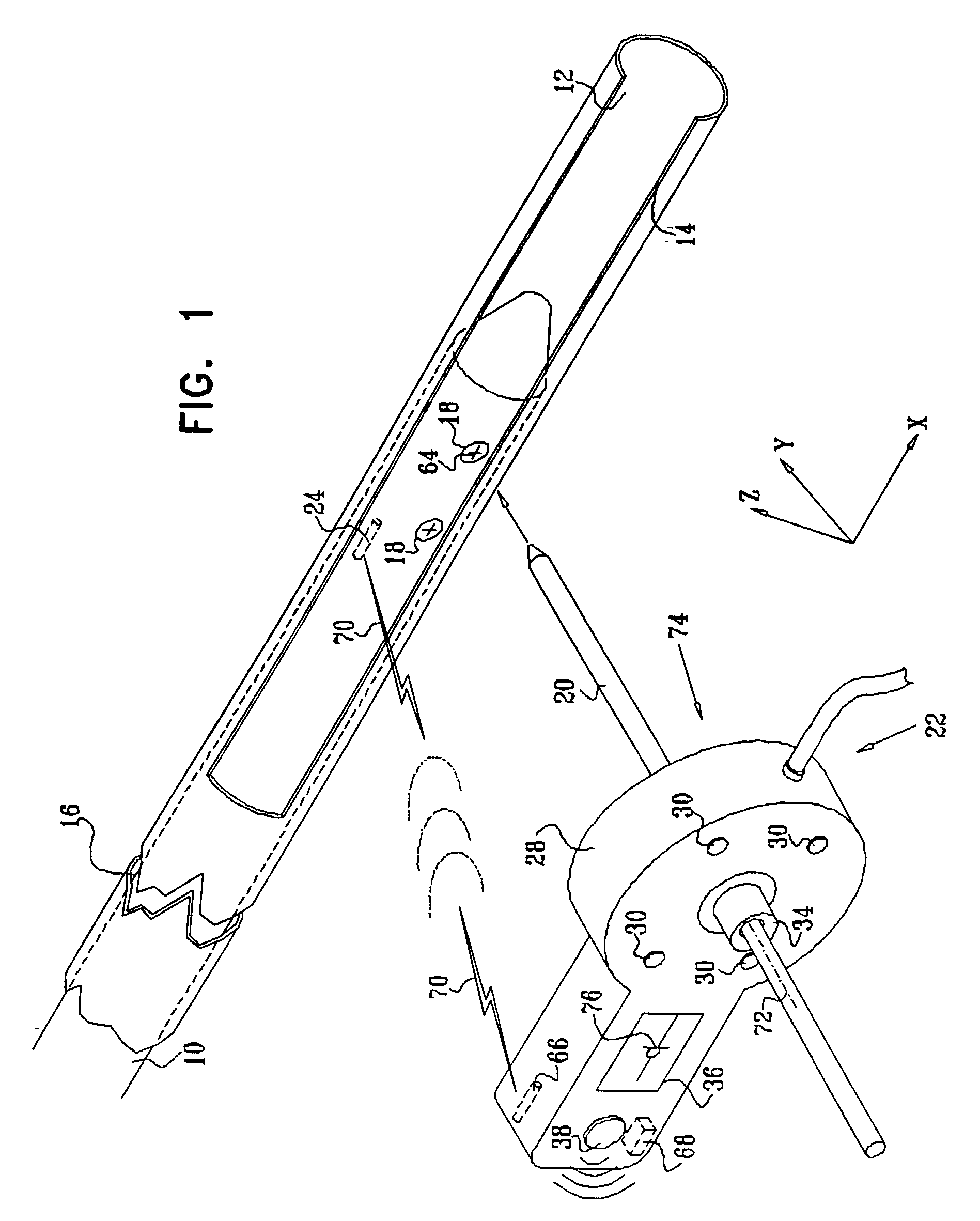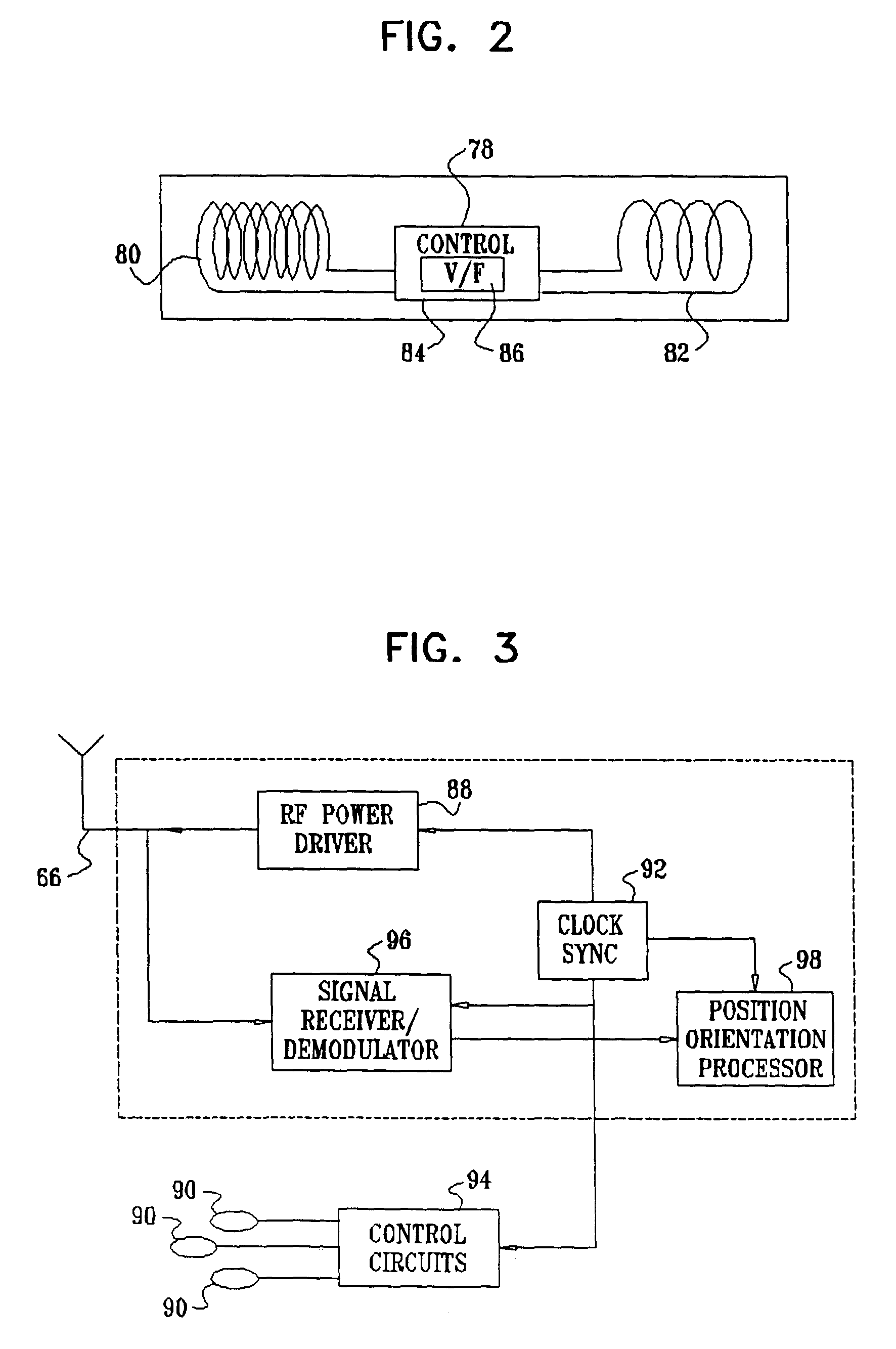Distal targeting of locking screws in intramedullary nails
a technology of intramedullary nails and drilling screws, which is applied in the field of intramedullary nails, can solve the problems of difficult localization, unsatisfactory approach, and technical difficulties of the procedur
- Summary
- Abstract
- Description
- Claims
- Application Information
AI Technical Summary
Benefits of technology
Problems solved by technology
Method used
Image
Examples
first embodiment
[0084]Turning now to the drawings, reference is made to FIG. 1, which is a schematic illustration of a distal targeting system which is constructed and operative in accordance with a preferred embodiment of the invention. A hollow appliance, preferably an intramedullary nail 10, is suitably dimensioned to a medullary cavity 12 of a bone 14 for the purpose of stabilizing a fracture 16. The intramedullary nail 10 is provided with at least one bore 18 for receiving a locking member 20 therethrough. The locking member 20 is typically realized as a wire or set screw, and must be inserted by the operator without benefit of direct visualization of the bore 18.
[0085]A magnetic field positioning arrangement 22 enables the operator to localize the bore 18 and to align the locking member 20 with the bore 18 prior to insertion therein. A miniature magnetic sensor 24 is disposed in the intramedullary nail 10, at known positional and rotational offsets from a principal axis 64 of the bore 18. In ...
second embodiment
[0106]Reference is now made to FIG. 7, which is a schematic illustration of a distal targeting system which is constructed and operative in accordance with an alternate embodiment of the invention. Elements in FIG. 7 that are identical to those of FIG. 1 are given like reference numerals. In this embodiment, a magnetic field positioning arrangement 112 has a wired magnetic sensor 114, in place of the wireless sensor 24 (FIG. 1). Leads 26 are provided for powering the sensor 114 and obtaining a readout or other data therefrom. Leads 32 are provided to carry signals to a location pad 118 from the sensor 114. The location pad 118 is similar to the location pad 28 (FIG. 1), except that the location pad 118 requires no antenna or wireless receiving circuitry.
[0107]Reference is now made to FIG. 8, which is an enlarged fragmentary schematic view of the sensor 114 (FIG. 7). Three identical sensor coils 120, which can be wound on air cores or magnetic cores, are disposed within the sensor 11...
third embodiment
[0108]Reference is now made to FIG. 9, which is a schematic illustration of a distal targeting system which is constructed and operative in accordance with an alternate embodiment of the invention. Elements in FIG. 9 that are identical to those of FIG. 1 are given like reference numerals. A magnetic field positioning arrangement 122 is similar to the magnetic field positioning arrangement 22 (FIG. 1), except now, there are three or more external field generators 124, driven by a control unit 126. The field generators 124 are preferably fixed to the operating table or to another non-moving fixture, and provide an absolute frame of reference. Using this embodiment, an absolute position of the sensor can be obtained. As is explained in further detail below, different variations of this embodiment are possible. It is possible to exchange the roles of the sensor and the magnetic field generator modules. Thus in one variation, magnetic field generator modules and sensor can be located as ...
PUM
 Login to View More
Login to View More Abstract
Description
Claims
Application Information
 Login to View More
Login to View More - R&D
- Intellectual Property
- Life Sciences
- Materials
- Tech Scout
- Unparalleled Data Quality
- Higher Quality Content
- 60% Fewer Hallucinations
Browse by: Latest US Patents, China's latest patents, Technical Efficacy Thesaurus, Application Domain, Technology Topic, Popular Technical Reports.
© 2025 PatSnap. All rights reserved.Legal|Privacy policy|Modern Slavery Act Transparency Statement|Sitemap|About US| Contact US: help@patsnap.com



